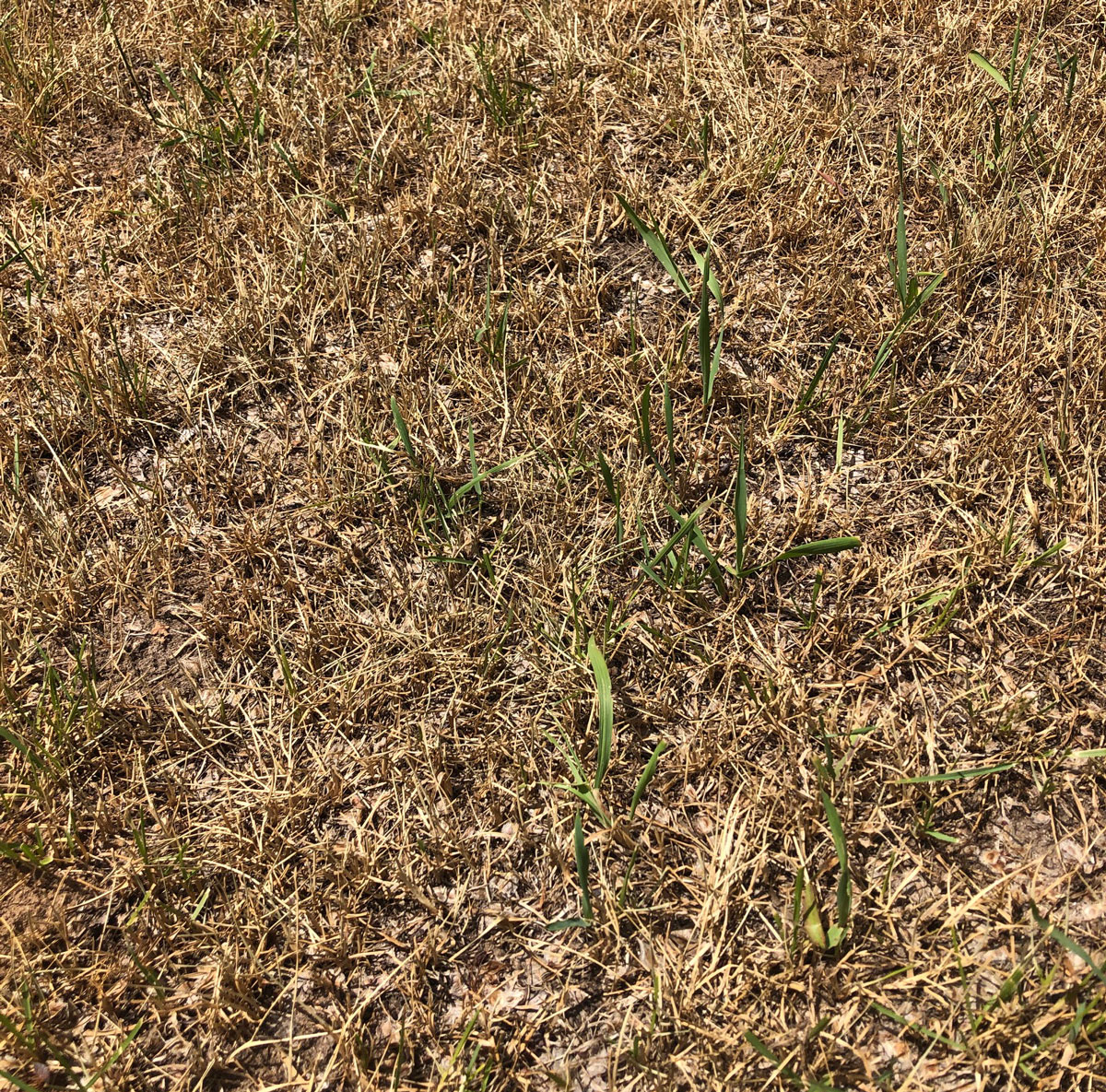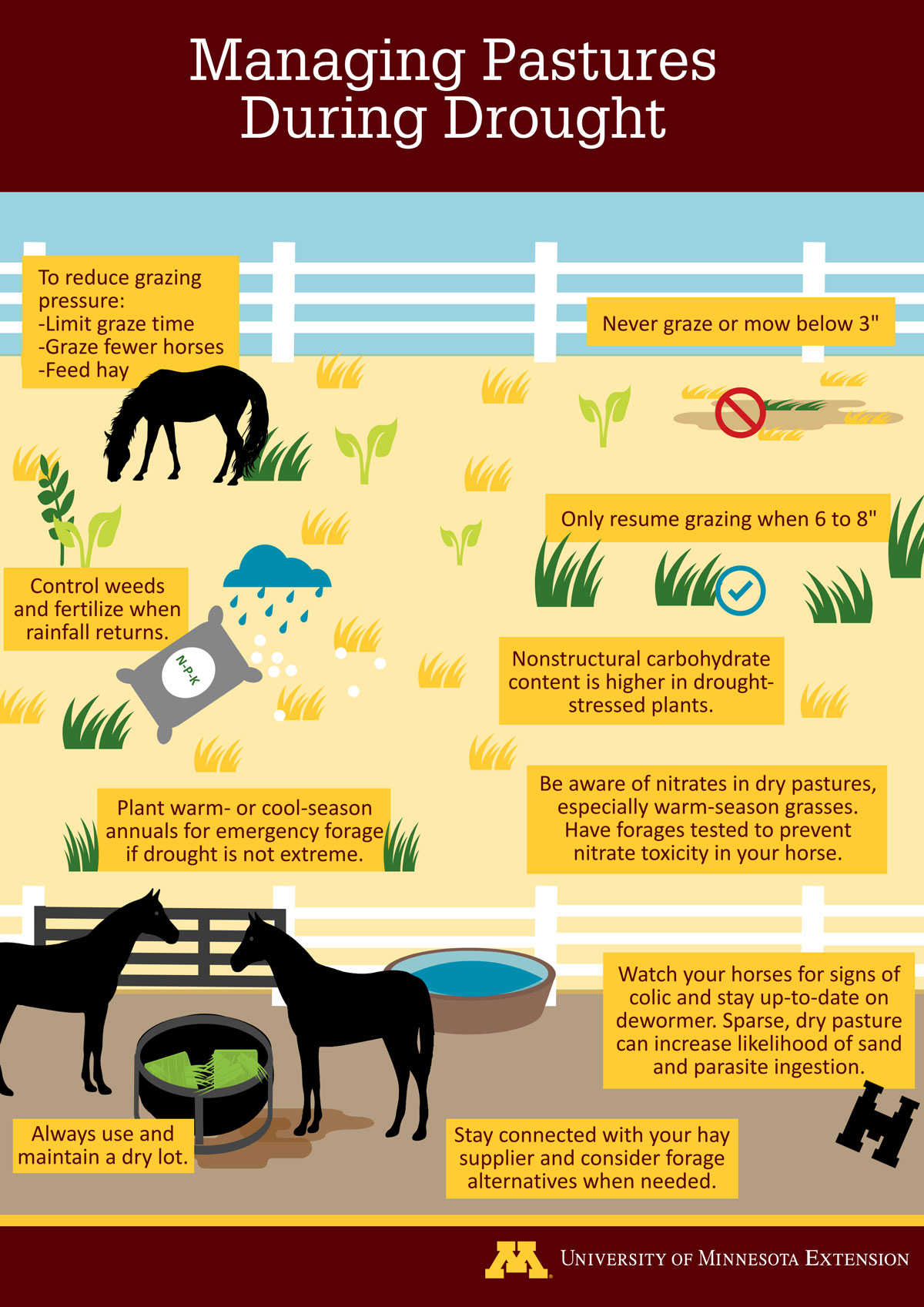
Recent dry weather has raised several questions about how to manage horse pastures during drought. These 10 tips for managing drought-stressed cool-season grass pastures in the Midwest can help ensure pasture longevity and maximize growth when rainfall comes.
- Avoid overgrazing. Without moisture, pasture growth slows and pastures may even become dormant. Grazing (or mowing) below 3″, and excessive hoof traffic, can accelerate drought effects and slow regrowth once it rains.
- Evaluate stocking density. Reduce horse grazing pressure by limiting grazing time, grazing only a few horses vs. the entire herd, using grazing muzzles, and feeding hay.
- Provide time for regrowth after rainfall. One rainfall event does not immediately improve a dry pasture because it can take several inches of rainfall to restore soil moisture. Regrowth should reach 6″ to 8” before grazing resumes. While grazing regrowth before it reaches 6” might provide some forage, it is detrimental to pasture plants, can weaken root systems, and will reduce the long-term productivity of the pasture.
- Control weeds. Some weeds are especially good at surviving in dry conditions and use scarce water resources. It is best to control weeds during wetter periods when weeds are actively growing. Always read the herbicide label prior to use. Ensure the product is labeled for pastures and follow all grazing restrictions and recommendations related to environmental conditions at the time of use.
- Maintain pasture fertility. All pastures should be fertilized annually according to soil test results. Fertilizer is most effective when it’s dissolved into the soil via rainfall; therefore, owners should be ready to apply fertilizer when rainfall returns following a drought. Dry pastures regrow more quickly when fertilizer, especially nitrogen, is applied prior to rainfall. Fertilizers can be applied up until early September.
- Consider annuals. Planting warm-season (e.g., teff) or cool-season (e.g., winter wheat) annuals can provide emergency forage. Annuals have been shown to effectively provide short-term forage for horses when planted between mid-August and early September. However, in cases of extreme drought, annuals are not a good option as some rainfall is needed to support germination and plant growth.
- Maintain and use a dry lot. Housing horses in a dry lot will help avoid over-grazing and provides an ideal place to feed hay.
- Be aware of nonstructural carbohydrate (NSC) content. Cool-season grasses average 12% to 16% NSC during summer months; however, NSC content can exceed 20% during dry periods. This is because grasses tend to accumulate NSC to help buffer the negative impacts of stress, including drought. While elevated NSC concentrations may not negatively impact healthy horses, these levels are likely to cause issues in horses with a history of laminitis, obesity, Equine Metabolic Syndrome, and other diagnoses requiring a diet lower in NSC.
- Know the risks associated with nitrate toxicity. The potential for nitrate toxicity, especially if grazing weedy pastures, warm-season grasses, or their early regrowth, is elevated during dry periods. A forage nitrate test can determine the risk for nitrate toxicity. Horses should not consume forages with nitrate concentrations over 4,600 ppm.
- Watch horses. Dry pastures tend to be sparse with shorter grasses that can increase the likelihood of ingesting soil, especially sand, and parasites. Watch for signs of sand colic and ensure horses are current on deworming.
Finally, during dry conditions it’s important that horse owners plan ahead with hay and forage alternatives. If pastures are negatively impacted by dry conditions, it’s likely local hay supplies will be as well. Calculating hay needs, communicating early and often with hay suppliers, and considering forage alternatives can help provide viable options and allow owners time to prepare for feeding horses during dry periods.



